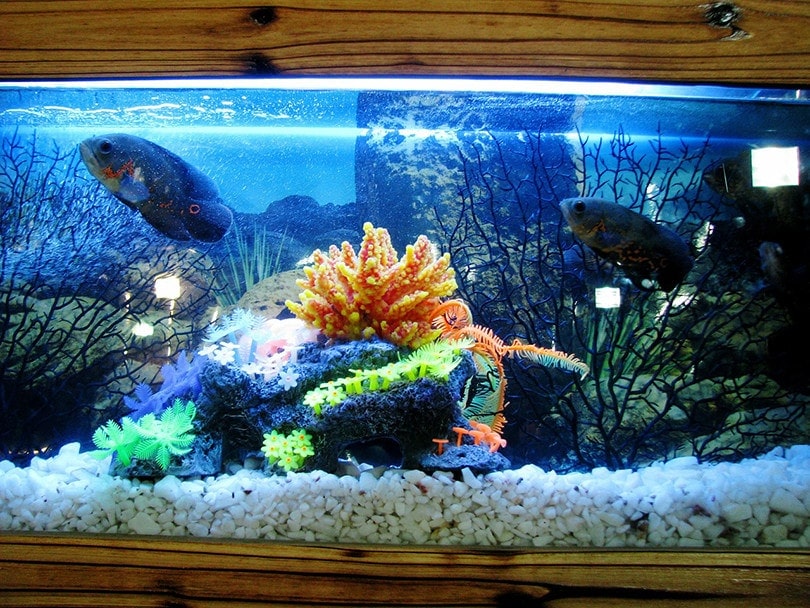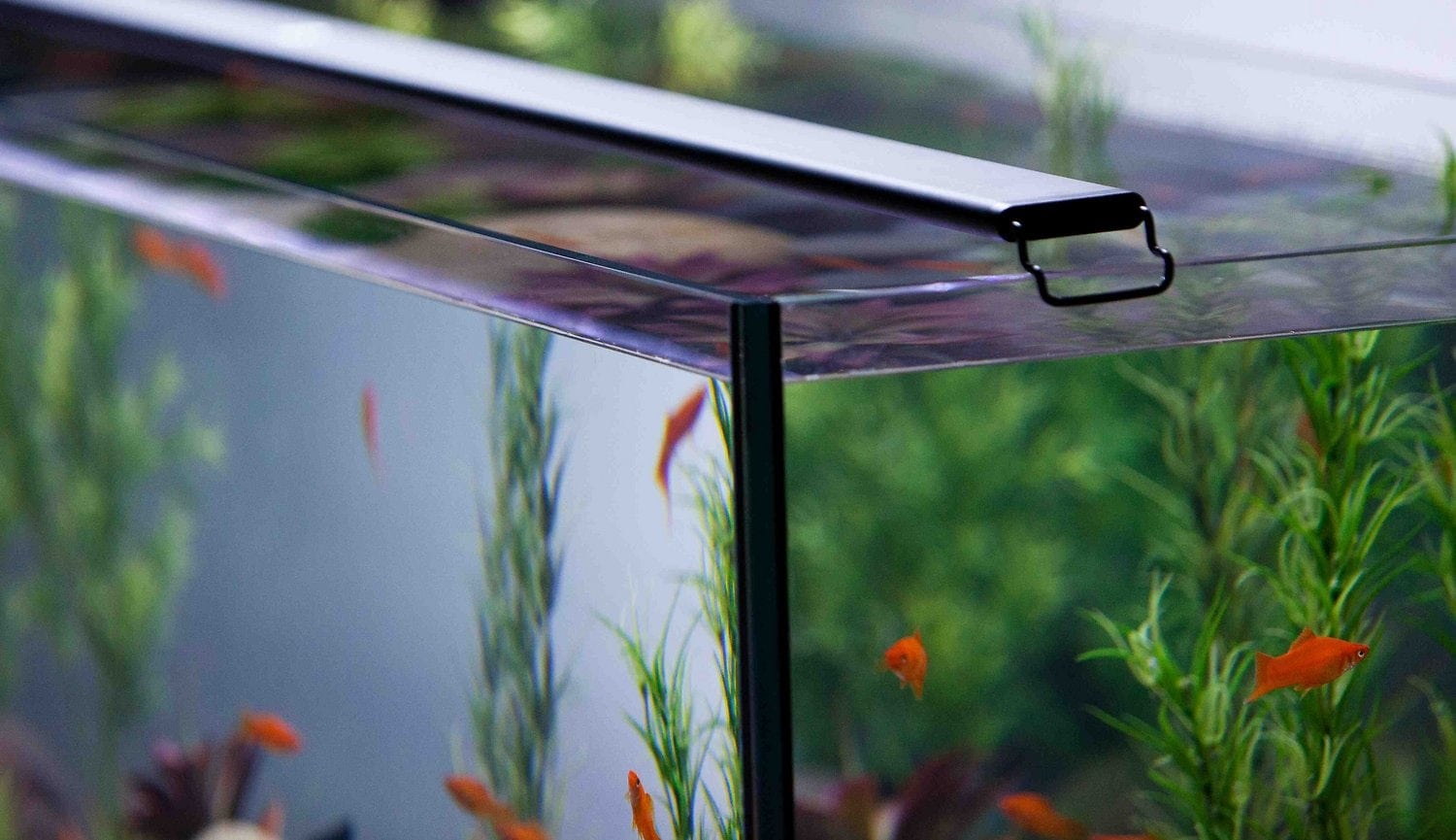26 Most Aggressive Freshwater Aquarium Fish (With Pictures)

Updated on
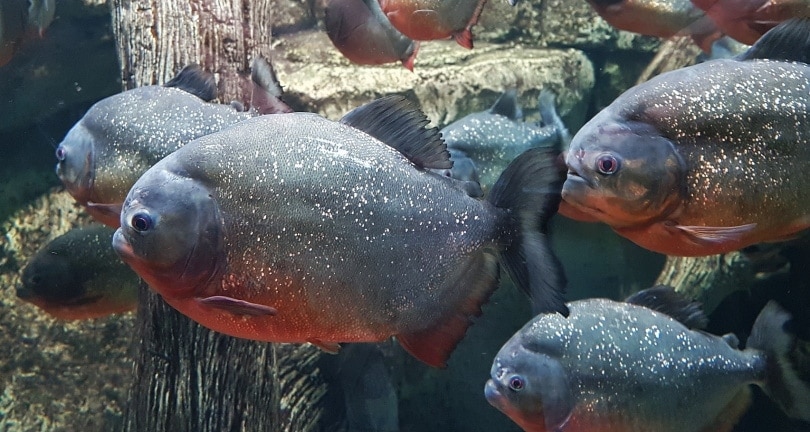
In freshwater aquariums, we’re all used to seeing Goldfish, Bettas, Neon Tetras, and various snails. Regardless of the fish, it’s essential to select appropriate tank mates that will be a safe match in the aquarium. Sometimes, people take a particular interest in oddball fish that are uncommon in most home aquariums.
However, it’s not unusual for some fish to not be popular with the average fishkeeper due to aggressive tendencies that make it challenging to select tank mates or even manage the fish. Here are some of the most aggressive freshwater aquarium fish you’re unlikely to see regularly in most aquariums. 
The 26 Most Aggressive Freshwater Aquarium Fish
1. Arowana
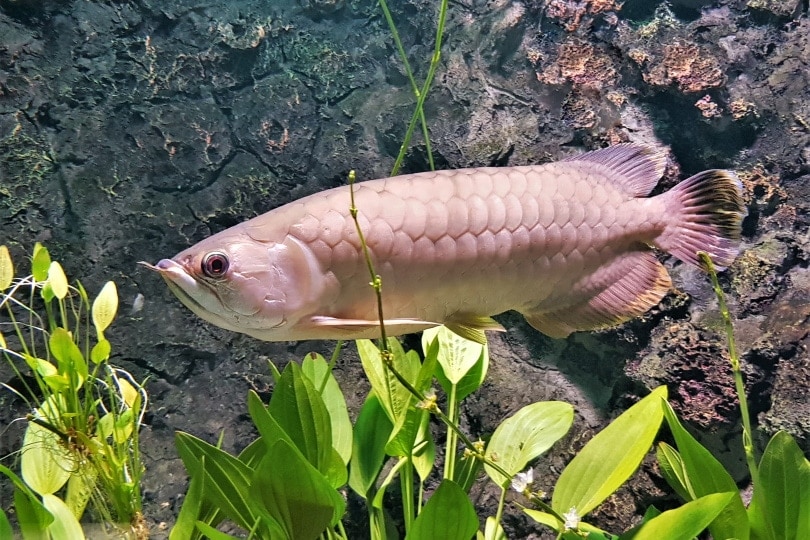
The Arowana isn’t just one of the most aggressive fish you can get for a freshwater aquarium, but it’s also the most expensive. The most expensive freshwater fish ever sold was a Platinum Arowana that sold for almost half a million dollars.
Arowanas are especially intolerant of other Arowanas in their space. Since these fish can grow to around 4 feet in length, you’d have need a truly massive tank to house two Arowanas together safely.
2. Piranha
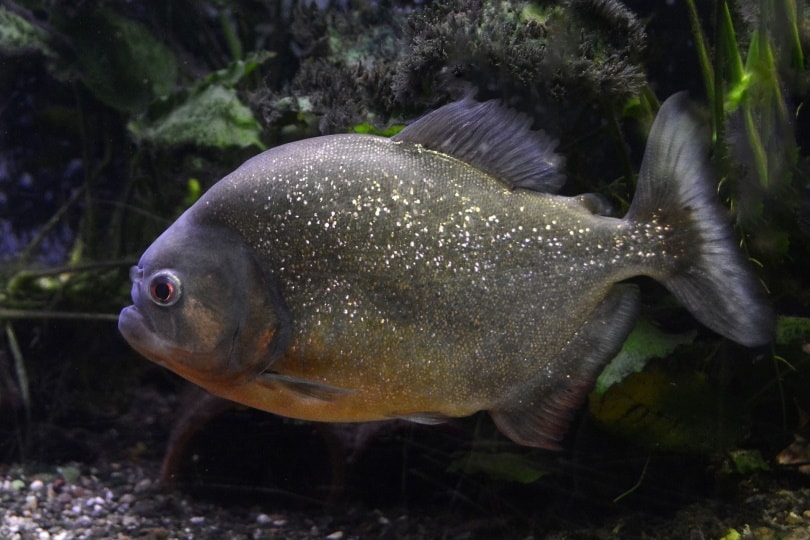
You may not have realized it, but the fish you’ve seen consuming a cow in 3 minutes on nature shows is also a popular aquarium fish, particularly with experienced fish keepers.
They are best kept in schools of around 20 fish, but they are relatively intolerant of having tank mates and are sometimes known to eat anything that moves in the tank. Keeping Piranhas requires a large tank and a lot of patience and care to keep them and you safe.
3. Ornate Bichir
These fascinating fish bring a prehistoric touch to a freshwater aquarium. They are beautiful fish popular with people who enjoy keeping large fish. The Ornate Bichir can reach up to 2 feet long and is a predatory carnivore. They are known to be fin-nippers, and it is not uncommon for them to attack or eat tank mates.
4. Aimara Wolf Fish
Although nowhere near as expensive as the Arowana, the Aimara Wolf Fish will set you back a few hundred dollars. These aggressive predators have a mouth full of sharp teeth.
They can grow up to 4 feet long, and it is recommended that they are kept alone with no tank mates due to their highly aggressive nature. Some people recommend keeping the fish in huge tanks that are 300 gallons or more or even in indoor or climate-controlled ponds.
5. Black Wolf Fish
Although not quite as aggressive as the Aimara Wolf Fish, the Black Wolf Fish is still a large predatory fish that experts usually recommend keeping in a tank alone. The only potential tank mates for these fish are similarly sized fish with aggressive or semi-aggressive tendencies, but even that is likely to end disastrously. They can reach sizes up to 20 inches and require tanks of at least 120 gallons.
6. Red Tail Shark
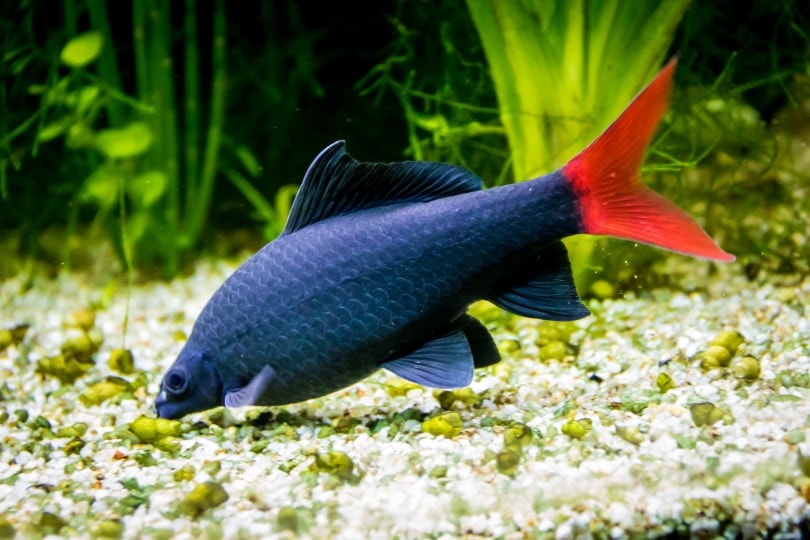
This is a fish you’ve likely spotted in your local pet store, and you may have even owned one. Unfortunately, many people are ill-equipped to provide proper care to these fish.
They are not sharks but are a type of carp, making them cousins of the Goldfish. Sometimes, they can be successfully kept in community aquariums with plenty of space and plant cover. However, they do not do well when kept with other red tail shark or similar fish.
7. Rainbow Shark
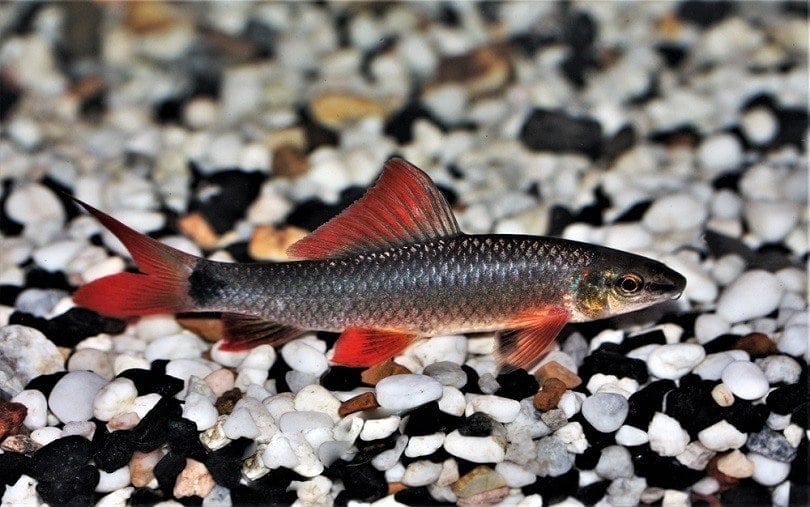
Often confused for the Red Tail Shark, the Rainbow Shark is also not a shark and is actually a carp. They are omnivores that are considered semi-aggressive. Although they can often be kept in community tanks, they don’t do well with other “shark” type fish. Even though these fish only reach 4–6 inches, they require a lot of space.
8. Mini Dovii
Don’t be fooled by the name because these fish can reach 12 inches when full-grown. Also called the Sieve Cichlid, the Mini Dovii is an aggressive fish that becomes incredibly aggressive when breeding.
They can often be kept in tanks with other aggressive or semi-aggressive fish that are hardy enough to stand up to the Mini Dovii, like large Plecos and some other Cichlids. It is often recommended only to keep one of these fish if you intend to keep it in a community aquarium to reduce the risk of aggressive breeding behavior.
9. Afer Knife
This variety of Knifefish is not common in the aquatics trade, but they are interesting pets. The Afer Knife is known for being bolder than most other Knifefish, so it is more likely to be out and about looking for a fight.
They can grow to 20 inches and require a tank of at least 150 gallons. Appropriate tank mates for the Afer Knife include other large fish, but they are not typically tolerant of other Knifefish.
10. Black Ghost Knife
The Black Ghost Knife is a more common variety of Knifefish than the Afer Knife. It is also timider and less aggressive. However, once settled into their environment, these fish tend to become territorial and will often go after slow and small tank mates.
When kept with other similarly sized fish, the Black Ghost Knife typically does fine, but since they can exceed a foot in length, keeping a large enough tank may be difficult. The Black Ghost Knife can become comfortable with its humans and may even become bold enough to come out of hiding to greet you.
11. Giant Gourami
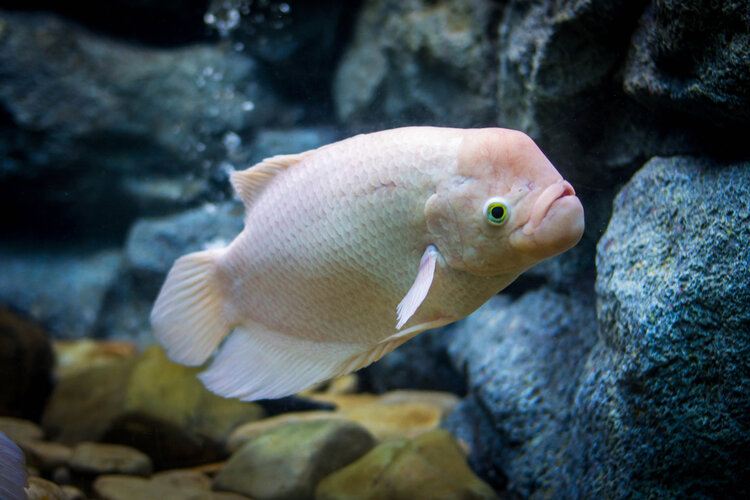
This enormous Gourami can grow up to 18 inches long and is mainly known for its position as a food fish for parts of Southeast Asia. These fish can become relatively tame and gentle over time, but their behavior can be unpredictable and varies significantly between individual fish.
The best way to ensure your Giant Gourami doesn’t become aggressive toward tank mates is to provide plenty of space to avoid it feeling crowded, which can be difficult for most people to achieve since these fish typically need a tank of 200 gallons or more.
12. Jaguar Cichlid
The Jaguar Cichlid is a large variety of Cichlid that can reach up to 2 feet in length. They are known for aggression toward tank mates, especially during breeding periods.
Few tank mates are recommended for these fish, except large Plecos, like the Common Pleco, which can withstand bullying from the Jaguar Cichlid. These carnivores will happily eat smaller tank mates and will behave aggressively toward large tank mates.
13. Green Terror Cichlid
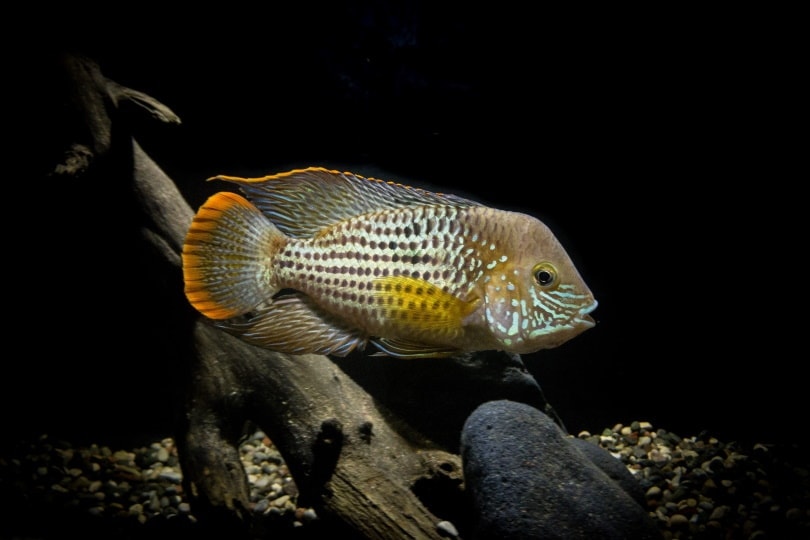
The Green Terror Cichlid is one of the most brightly colored and beautiful Cichlid fish for freshwater aquariums. They reach a foot in length and can be kept in community aquariums under specific circumstances. They will eat smaller tank mates, so they’re best kept with other large fish.
Be aware that Green Terror Cichlids will form bonded pairs when kept in groups, and this can increase aggressive tendencies toward other tank mates if they feel the need to protect their partner or territory.
14. Convict Cichlid
Named for its black and white jailhouse uniform pattern, the Convict Cichlid is a smaller variety of Cichlid, only reaching around 6 inches long. What this fish lacks in size, it makes up for in aggression. They will eat smaller tank mates, and it’s recommended to only keep Convict Cichlids with tank mates that are larger and aggressive or semi-aggressive.
15. Umbee Cichlid
The Umbee Cichlid is a boisterous fish prized for its attractive colors and aggressive nature. They can grow to 20 inches long and require a tank of at least 180 gallons. It’s recommended to keep Umbee Cichlids in species-only tanks, but they can be successfully housed with other large, aggressive fish.
16. Jack Dempsey Cichlid
Named for the 1920s boxer Jack Dempsey, the Jack Dempsey Cichlid reflects its namesake in aggression and appearance. They are beautifully colored but can be difficult to keep in community tanks.
They grow to around 10 inches long, and it’s recommended to keep them in a species-only or Cichlid-only tank, but they can sometimes be kept with other large, semi-aggressive fish.
17. Jewel Cichlid
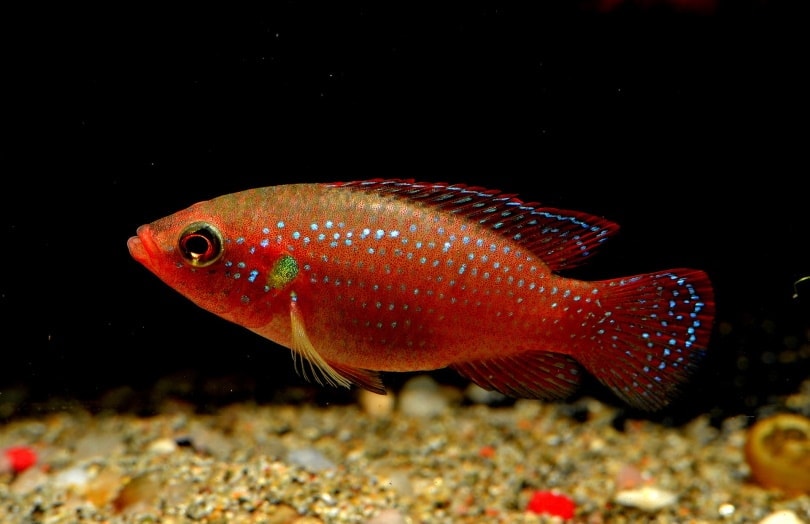
These brightly colored Cichlids are petite fish, only reaching around 4 inches at maturity. The Jewel Cichlid is known for being an overall peaceful fish that can sometimes be kept in community tanks.
The problem with these Cichlids happens once the fish have formed bonded pairs and begin breeding. The pairs can become overtly aggressive and territorial toward tank mates, especially those with a similar appearance to the Jewel Cichlid.
18. Wolf Cichlid
The Wolf Cichlid is a massive Cichlid that can exceed 2 feet long. These fish are known to be aggressive, and the aggression increases significantly during breeding. They form bonded pairs, and it’s usually recommended to keep them in species-only tanks or with other large, semi-aggressive or aggressive fish. Common Plecos can be good tank mates to the Wolf Cichlid, though.
19. Severum
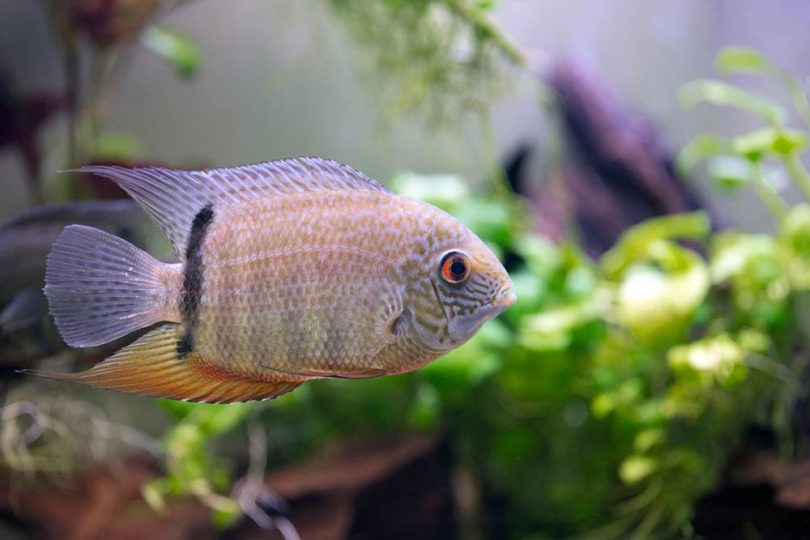
As one of the more unusual looking Cichlids, the Severum has a distinctly beak-like face. They are considered semi-aggressive and learn to recognize their humans, often growing trusting enough to eat directly from their hands.
They grow to around 8 inches and become aggressive toward tank mates during spawning. It’s usually recommended to keep Severums in species-only or Cichlid-only tanks.
20. Oscar
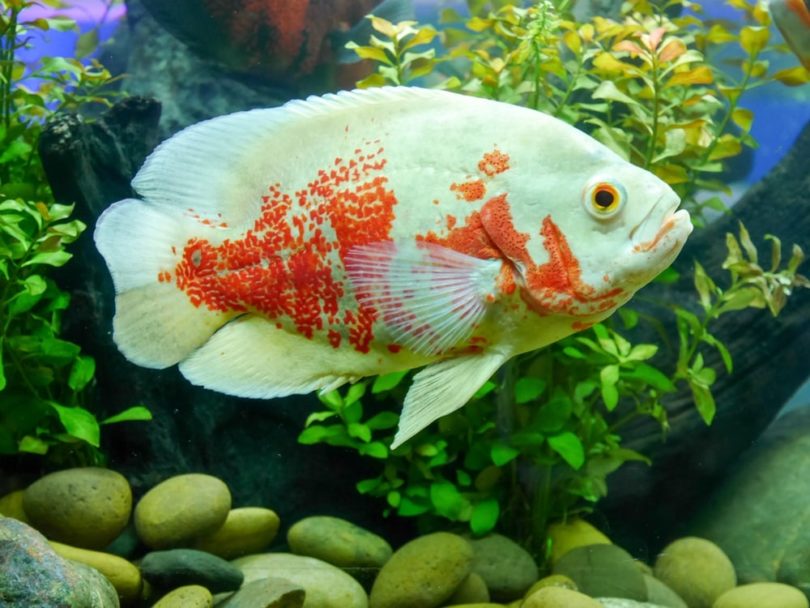
Often bought when only a few inches long, the Oscar is a Cichlid that can grow to 15 inches. They are aggressive toward tank mates, especially after forming bonded pairs.
They are best kept with similarly sized fish as individuals or as pairs. Otherwise, you may have an Oscar fish that keeps eating its tank mates. Be prepared to purchase a large aquarium since they require tanks of at least 55–75 gallons.
21. Red Devil Cichlid
Fish keepers love the Red Devil Cichlid for its outgoing personality and perceptiveness of the world outside of the tank. These fish are unusual looking and develop a distinct bump on the forehead as they age.
They tend to lie between territorial and aggressive, and their temperament varies significantly from fish to fish. It’s best to keep them in species-only tanks or tanks with other large fish. The Red Devil Cichlid can grow to around 10 inches long.
22. Snakehead
The Snakehead is a fish rarely found in freshwater aquariums due to restrictions on ownership and transportation of these fish. They are invasive fish in the United States, so the US government has placed multiple restrictions on them.
Typically, Snakeheads avoid humans, and if you keep one in an aquarium, you aren’t likely to see it very often. However, they can become aggressive during breeding and when protecting eggs, even toward humans.
23. Freshwater Stingray
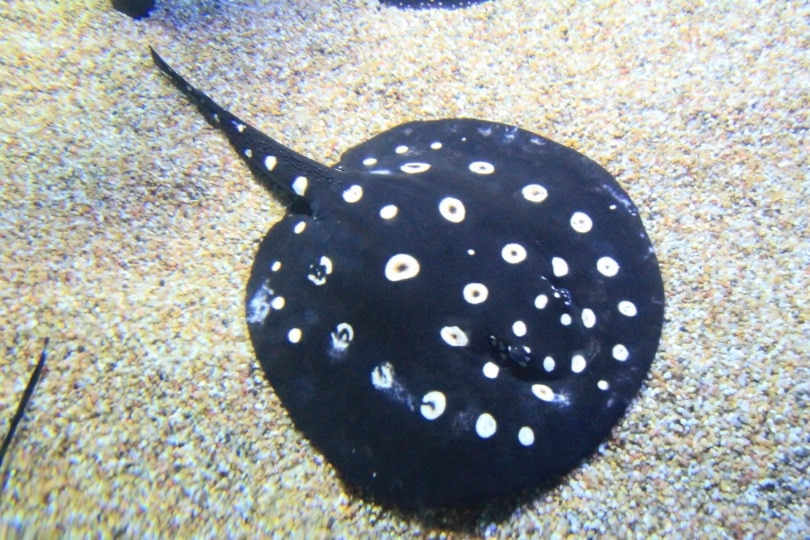
Freshwater Stingrays are unique fish that can be eye-catching in an aquarium. However, they are very sensitive to water parameters and need large tanks with plenty of floor space for swimming.
Stingrays are not necessarily aggressive, but they can eat smaller tank mates. It’s recommended to keep them with other large fish, and they can be housed with aggressive fish that won’t seek them out to bully or nip, like Arowanas.
24. Pea Puffer
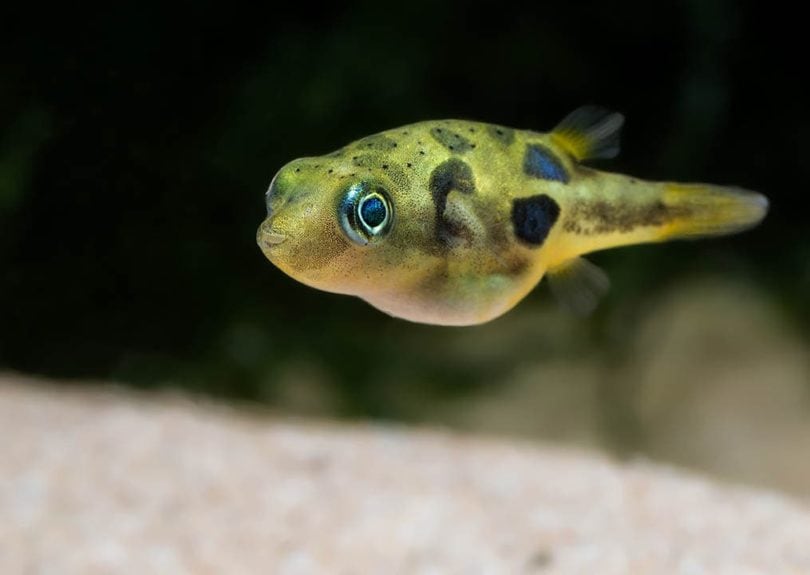
These tiny fish can be a great addition to community tanks, but they will eat smaller tank mates, especially invertebrates like shrimp and snails.
Pea Puffers generally don’t get along with other Pea Puffers and can become territorial. Usually, they require 5 gallons each with plenty of space and plant cover to feel safe and comfortable.
25. Tiger Barb
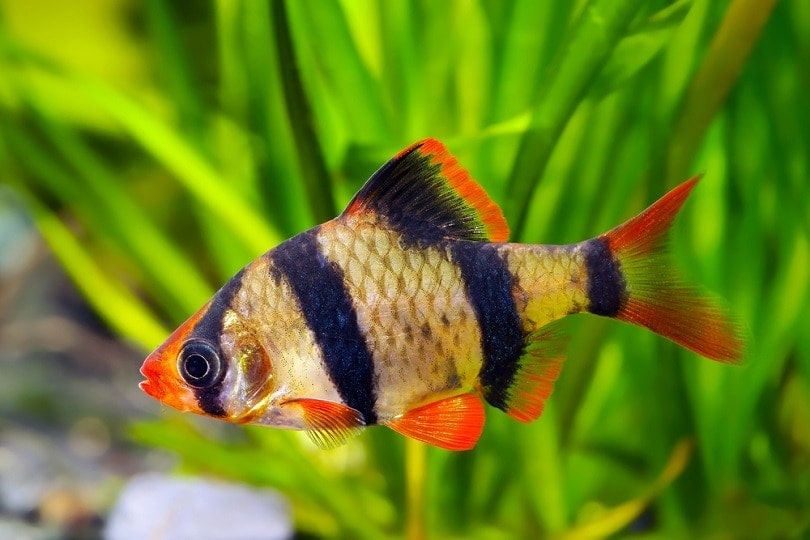
Although they only grow to around 4 inches or less, Tiger Barbs are one of the more popular aggressive fish. Their unassuming size and bright colors are appealing to experienced aquarists.
They do best in shoals, and keeping them in large enough groups can often dissuade aggressive tendencies. However, tank mates should be chosen carefully, and they shouldn’t be housed with timid fish, especially those that may share parts of the water column with them.
26. Betta
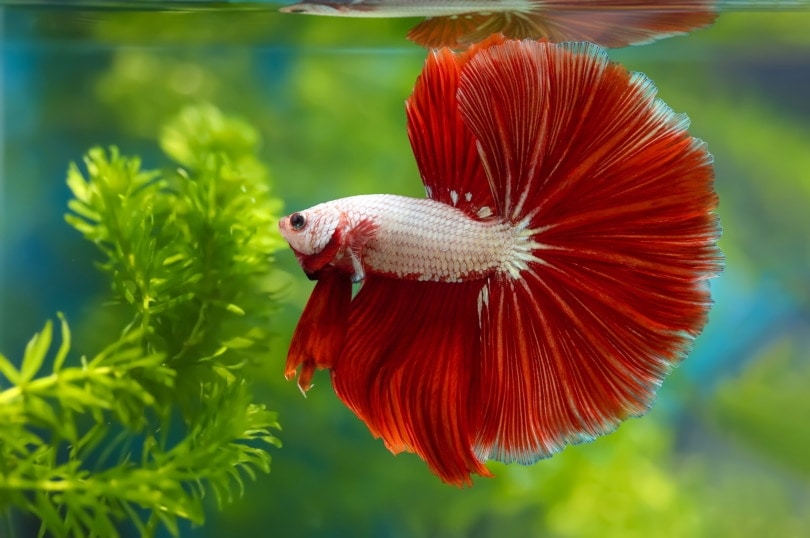
One of America’s most popular fish is also one of the most aggressive for freshwater aquariums. Betta fish are popular due to their beauty and easy care level. However, male Bettas can rarely be safely kept with other fish, and even female Bettas can become aggressive.
Some people successfully keep female Bettas in sororities or community tanks, but they can be unpredictable. Generations of breeding for fighting have left these fish with aggressive tendencies.

In Conclusion
It’s important to thoroughly research any fish you’re interested in bringing home before standing in your living room with a bag full of fish. If you unintentionally end up with an aggressive fish, it can put you in a difficult position trying to keep everyone safe and happy.
With all the aggressive fish there are for freshwater aquariums, there are dozens of species that aren’t aggressive and can make excellent additions to community tanks.
Featured Image Credit: Pixabay

